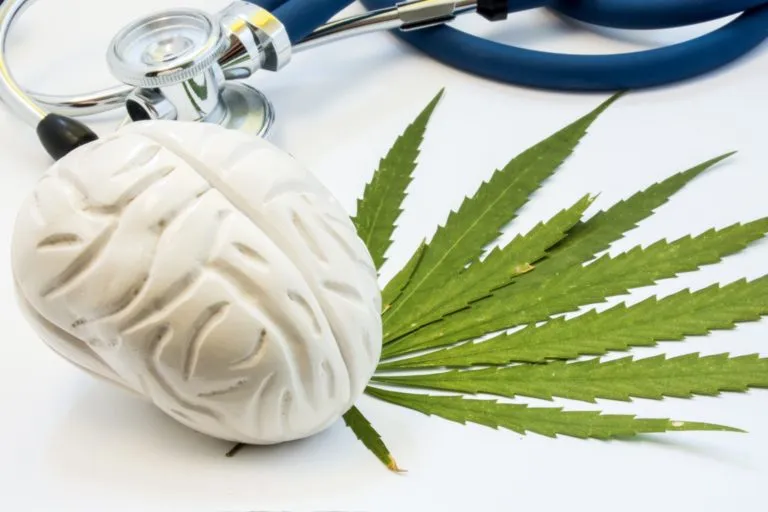Mood Disorder: What It Is, Symptoms, Diagnosis, and Online Treatment


At Talkiatry, we know that navigating mental health can feel overwhelming. Our mission is to make it easier—starting with information you can trust. As a national mental health practice with over 600 psychiatrists and other providers, we combine clinical excellence with real-world understanding to deliver incredible care and reliable information. This article has been medically reviewed by the same doctors who treat our patients every day, ensuring it meets the highest standards. Whether you’re seeking care now or simply looking to learn more, we’re here to help.
Mood disorders like depression and bipolar disorder affect about 1 in 5 US adults in their lifetime. These conditions can cause significant shifts in mood and energy, but they are treatable. Many people find lasting relief through a combination of tools like medication, therapy, and supportive lifestyle practices.

Expert mood disorder care at Talkiatry
- 600+ doctors who specialize in psychiatry
- In-network with 200+ insurance plans
- First appointments in days
What is a mood disorder?
Experiencing ups and downs is a part of being human. But when mood changes are persistent, extreme, or interfere with work or relationships, they may be symptoms of a mental health condition.
Mood disorders are a group of conditions that involve ongoing disruptions in energy levels, behaviors, and emotions. Depression and bipolar disorder are two of the most well-known. These shifts aren’t just temporary reactions to stress. They often last for weeks or longer and can make daily life feel overwhelming or unpredictable.
The severity of a mood disorder can vary widely. Some people may experience mild symptoms while others face more intense episodes that disrupt their daily life. Effective treatment is available—and recovery is possible—for the full spectrum of symptoms.
Types and symptoms of mood disorders
The category of mood disorders includes all forms of depression, all forms of bipolar disorder, and premenstrual dysphoric disorder (PMDD). Here’s what to know about these conditions.
Depression
Depression is characterized by ongoing feelings of sadness, lack of motivation, or loss of interest in activities that you once enjoyed. Other symptoms may include:
- Changes in concentration or attention
- Changes in sleep or appetite
- Fatigue or low energy
- Feelings of worthlessness
- Suicidal ideation
There are several forms of depression, all involving similar symptoms:
- Major Depressive Disorder (MDD): Persistent and intense feelings of sadness and loss of interest that interfere with daily functioning and last for two weeks or more
- Persistent Depressive Disorder (Dysthymia): A less severe but more chronic form of depression that lasts two years or more
- Bipolar Depression: Depressive episodes that alternate between manic or hypomanic episodes in bipolar disorder
- Seasonal Affective Disorder (SAD): A form of depression triggered by seasonal shifts, typically during fall and winter when daylight hours are shorter
- Postpartum Depression: Depression that develops during pregnancy or after childbirth
Bipolar I
Bipolar disorder is marked by intense shifts in mood, energy, and activity levels. There are several types, each with distinct patterns. Bipolar I is defined by at least one manic episode—an extended period of unusually high energy or elevated mood lasting at least seven days. Manic episodes involve changes in behavior that are often severe enough to require hospitalization. While depressive episodes are common, they are not required for diagnosis.
Manic episodes can include:
- Intense mood swings
- Feelings of euphoria, agitation, or irritability
- Risky or impulsive behavior
- Decreased need for sleep
Bipolar II
Unlike bipolar I, bipolar II doesn’t include full manic episodes and typically does not require hospitalization. Instead, people with bipolar II experience hypomania, a milder but still disruptive form of mania, and at least one major depressive episode.
Hypomanic episodes can include:
- Intense mood swings
- Increased energy and activity
- Decreased need for sleep
- Enhanced creativity or productivity
Cyclothymic disorder
This is a less common form of bipolar disorder with milder highs and lows. Someone with cyclothymic disorder might shift between mild depression and hypomania with neutral periods in between.
Can include:
- Emotional ups and downs
- Periods of increased energy
- Mild depressive symptoms
- Unpredictable mood changes
- Symptoms lasting two years or more
Premenstrual dysphoric disorder (PMDD)
PMDD is a more severe form of premenstrual syndrome (PMS). It involves changes in mood and energy in the days leading up to a menstrual cycle. To meet criteria for a diagnosis, symptoms must be present for at least three consecutive cycles and cause noticeable disruption in daily functioning.
Can include:
- Irritability or anger
- Mood swings
- Sadness or hopelessness
- Fatigue or changes in sleep
- Abdominal pain
- Headache

Struggling with mood disorder?
Find a great psychiatrist in 10 minutes.
What causes mood disorders?
Mood disorders don’t have a single cause. They usually develop from a mix of influences, including:
- Biological factors: Mood changes have been linked to imbalances in brain chemicals like serotonin and dopamine, which help regulate emotions. Differences in how certain areas of the brain function may also play a role.
- Genetic factors: Mood disorders tend to run in families.
- Environmental factors: Traumatic events and stressful life events, such as grief, financial stress, or relationship challenges, can trigger or exacerbate mood disorders, especially if other risk factors are present.
- Chronic medical conditions: Living with chronic health conditions, like diabetes, heart disease, or a neurological disorder, can also impact mood and increase the risk of developing a mood disorder.
- Substance use: Alcohol and drug use can make moods less stable and may trigger or worsen symptoms over time.
How mood disorders are diagnosed
A psychiatrist or psychiatric nurse practitioner can diagnose a mood disorder using screening tools and a clinical evaluation. The process often begins with a brief screening—a few simple questions that give your provider a snapshot of your mental health. If your responses suggest a possible mood disorder, the next step is a more in-depth conversation about your symptoms, medical history, and daily life. Your provider will refer to the DSM-5, the diagnostic manual for mental health conditions, to determine if you meet the criteria for a specific mood disorder.
Diagnosing bipolar disorder can take more time and may be more complex. That’s partly because people often seek help during depressive episodes, when symptoms like low mood or fatigue are most apparent. Manic or hypomanic symptoms may go unrecognized, and it’s also common to have limited memory of these episodes. Involving a trusted friend or family member who has observed changes in your mood or behavior can give your provider valuable insight and support an accurate diagnosis.
Receiving a mental health diagnosis can bring up many emotions. It’s natural to feel uncertain or overwhelmed, but many people also describe a sense of clarity or relief. Getting the right diagnosis is an important first step toward long-term healing and stability, and your psychiatrist can help you navigate any feelings that arise.

Find a mood disorder specialist
- Average 10 years of experience
- Use your insurance
- Licensed to prescribe, trained to listen
Mood disorder treatment options
Mood disorder treatment can involve medication, therapy, or a combination of both. Your specific plan will be tailored to your specific needs, symptoms, and goals.
Medication
Many medications can help regulate mood and improve functioning. Depending on your specific diagnosis, your provider may prescribe antidepressants, mood stabilizers, or antipsychotics. You can learn more about medications for mood disorders here.
Therapy
Therapy allows you to process your experiences with a mental health professional and learn how to cope with symptoms. Several types of talk therapy are effective for mood disorders:
- Cognitive behavioral therapy (CBT) is an evidence-based approach that helps you recognize patterns of thought or behavior that negatively impact your mood and then work toward new ways of thinking or acting.
- Dialectical behavioral therapy (DBT) is similar to CBT but provides additional support with the regulation of intense emotions. It helps you understand and accept difficult emotions and learn concrete skills for managing them.
- Other approaches include supportive psychotherapy, acceptance and commitment therapy (ACT), and psychodynamic psychotherapy.
Other treatment approaches
- Lifestyle changes: Healthy habits with sleep, nutrition, and physical activity can also stabilize mood and support overall well-being.
- Specialized treatments: For treatment-resistant mood disorder symptoms, you may be referred to outside providers for other treatments like transcranial magnetic stimulation (TMS) or ketamine therapy.
Online treatment for mood disorders: How Talkiatry works
Finding mental health care can feel overwhelming, but we make it simple. With our virtual appointments, you can see a licensed psychiatric provider from the comfort of your home. Together, you’ll build a treatment plan that fits your needs, whether that includes therapy, medication, or both.
Our clinical team is highly experienced in diagnosing and treating a wide range of mood disorders. We’ll match you with providers who fit your specific needs. Once you choose your psychiatrist, you can have your first appointment in just a few days.
What our patients say

“I recommend Talkiatry to anyone that will listen. The benefits this network has provided me in such a short time are priceless and immeasurable.”

“She is very relatable. She is mindful of cost of my medications.”
“Great experience! Provider was ready early which was amazing and honestly never happens. Really appreciate honoring a patient’s time.”


Covered by insurance, designed for you: online mood disorder treatment
Great mental health care should always be within reach. We partner with more than 100 insurance plans to keep care accessible, and our virtual model makes it easy to get expert support from home. Together, you and your provider will build a treatment plan that works for you.

Why trust us
It’s our mission to expand access to care—and that includes reliable information about mental health. Before we publish any article, we make sure it’s:
- Reviewed by a psychiatrist who treats these conditions every day
- Backed by science and real-world clinical expertise
- Written to help you make informed decisions about care
This article was reviewed by Dr. Caitlin Gardiner, MD
Learn more about Mood disorder
.jpg)


Learn about what else we treat
As seen in




What are the 5 treatments for mood disorders?
What are the 5 treatments for mood disorders?
The treatment plan you create with your provider will be tailored to your specific needs and goals. Treatment for mood disorders can involve a combination of the following evidence-based approaches:
- Medication management: Safe and effective medications like antidepressants, mood stabilizers, and antipsychotics can help regulate mood and reduce symptoms.
- Psychotherapy: Talk therapy, including cognitive behavioral therapy (CBT) and trauma-informed care, helps individuals understand and manage emotional patterns.
- Lifestyle changes: Good habits around sleep, nutrition, and physical activity can support mood regulation and mental wellness.
- Psychoeducation: Learning about mood disorders helps individuals recognize symptoms, build coping skills, and engage in their treatment.
- Advanced treatments: For treatment-resistant cases, your provider may suggest additional interventions like transcranial magnetic stimulation (TMS).
Is anxiety a mood disorder?
Is anxiety a mood disorder?
No. Anxiety disorders are distinct conditions characterized by persistent worry, fear, or nervousness. However, anxiety and mood disorders can occur together. If you’re experiencing ongoing feelings of anxiety along with mood changes, a comprehensive evaluation can help clarify what’s going on.
Is ADHD a mood disorder?
Is ADHD a mood disorder?
No. ADHD is a neurodevelopmental disorder that affects attention, impulse control, and activity levels. While mood changes can sometimes occur alongside ADHD, they are not core symptoms of the condition. If you’re noticing significant mood swings, sadness, or irritability in addition to ADHD symptoms, it’s important to speak with a mental health provider to determine if another condition, such as a mood disorder, may be present.
When should I see a healthcare provider for mood swings?
When should I see a healthcare provider for mood swings?
You should consider seeing a mental health provider if mood swings are:
- Frequent or unpredictable
- Affecting your relationships, work, or daily activities
- Accompanied by other symptoms like sadness, irritability, low energy, or sleep problems
- Lasting for two weeks or more
- Causing distress or making it hard to function
Mood swings may be a sign of a mood disorder such as bipolar disorder or disruptive mood dysregulation, and early evaluation can lead to better outcomes. Talkiatry offers virtual psychiatric evaluations to help you understand your symptoms and get appropriate care.
What lifestyle changes help manage mood disorders?
What lifestyle changes help manage mood disorders?
Lifestyle changes can play a significant role in managing mood disorder symptoms and supporting overall mental health. Evidence-based strategies include:
- Getting consistent, quality sleep: Good sleep hygiene promotes healthy sleep, an essential part of mood regulation.
- Balanced nutrition: Creating healthy habits around diet and nutrition promote brain, and overall, health.
- Regular physical activity: Exercise can help stabilize mood and reduce anxiety.
- Stress management techniques: Mindfulness, journaling, and relaxation strategies can improve resilience.
These changes are a great complement to other clinical treatments. Lifestyle changes in conjunction with medication and/or therapy are particularly effective.